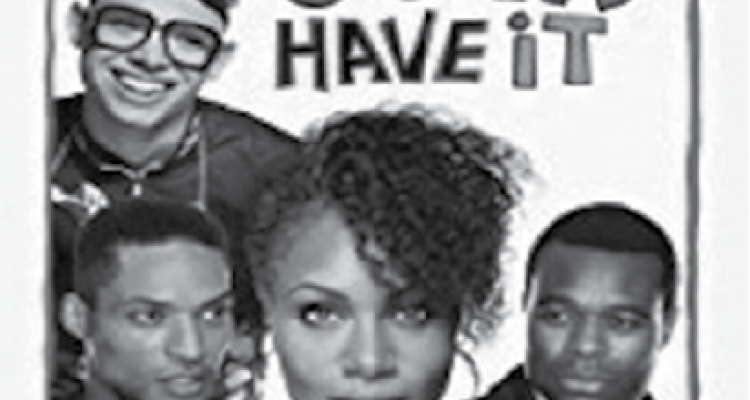To be honest, one of the only initial reasons I decided to watch Spike Lee’s “She’s Gotta Have It” on Netflix is because “Hamilton” star Anthony Ramos is in it. He’d been posting about it a lot on his Instagram in the days leading up to its release and though the trailer looked interesting on its own, my reason for watching after its Nov. 23 release was still majorly to do with Ramos. What was a happy surprise to me, after binging all 10 episodes in a single Saturday, was how I also fell in love with the rest of the cast, as well as with the story writer and director Spike Lee’s telling.
“She’s Gotta Have It” tells the story of Brooklyn artist Nola Darling (DeWanda Wise), a self-proclaimed “sex-positive, polyamorous pansexual,” that is sleeping with three men at the same time. They each have their own distinct personalities; the married and successful Jamie Overstreet (Lyriq Bent) acts as a source of stability and responsibility in Nola’s life. Greer Childs (Cleo Anthony) is cartoonishly narcissistic but is appreciated by Nola for his cultured interests and spontaneity. And my reason for watching, Anthony Ramos, plays the childish but hilarious Mars Blackmon, who acts as Nola’s most loyal cheerleader throughout the series.
These relationships comprise the main conflict of the show; Nola and her art are dealing with the struggles of being a woman in modern society, this issue heightened by being a woman living the lifestyle Nola has chosen by forgoing monogamy. This relationship between Nola and the art she creates act as the driving force of the show, as her detailed portraits and political street art both reflect the challenges she faces and show how she works through them. What I loved about Nola’s character was not only this mirroring of her serious and mature self in her artwork, but representations of herself outside of her work. She’s capable of strength and making these tenacious feminist statements, but she is also consistently impulsive, immature and even selfish to a degree. She keeps her commitments to her three men surface-deep to avoid a deeper emotional connection, revealing a well-hidden fear that she masks with her happy-go-lucky attitude.
And while Jamie, Greer and Mars sometimes question and challenge her approach to love and sex, her actual mindset is not tested until the introduction of another lover. There’s an entire episode dedicated to a woman named Opal (Ilfenesh Hadera) who seems to have everything Nola is striving for: financial and emotional stability, the utmost confidence in herself, and a clear understanding of what she wants. The resolution of the series, which dedicates an entire episode to a Thanksgiving dinner where Nola introduces Mars, Greer and Jamie to each other, ends with her alone in the aftermath and opening a door to let a visiting Opal in. “She’s Gotta Have It” is an extension and modernization of the 1986 Spike Lee “joint” by the same name, which, from what I’ve learned about the original film, relegated Opal to an insignificant part. I appreciated this added representation and respect given to Nola and Opal’s relationship, and am personally hoping for a season two that explores this relationship further.
There are parts of “She’s Gotta Have It” that I wasn’t as huge a fan of. Chief on this list is the subplot where one of Nola’s friends Shemeka (China Layne) gets butt injections, and though Nola briefly speaks up for her right to do what she wants with her body, Shemka is still shamed for it and has to deal with the consequences when things don’t work out. This reinforces an acceptance of body shaming that also has little to contribute in terms of furthering the plot, and was something I found defeated the feminist message Lee was trying to make with this new series. The quality of the acting can also be called into question, sometimes coming across as overdone and cheesy in an effort to be profound. Though the dialogue choices could sometimes set the maturity of the show back, the actors’ performances shone despite these gaffs.
The joy that is inherent to this series can be best summed up in one of the final moments of the last episode. In the culmination of references to Prince throughout the series, Nola and her three men perform an admittedly random but thoroughly enjoyable dance number to “Raspberry Beret,” which was honestly one of my favorite parts of the whole show. It doesn’t really fit with the rest of the show, but that’s the point of “She’s Gotta Have It”: the entire series is littered with random songs, photographs of Brooklyn natives, and the art pieces Nola creates and surrounds herself with, so in the grand scheme of things, a breakout dance number is an appropriate finale. “She’s Gotta Have It” is definitely unlike any program on Netflix right now and is great viewing for anyone searching for a show that makes a statement.
Rating: 4 out of 5 stars


Leave a Reply